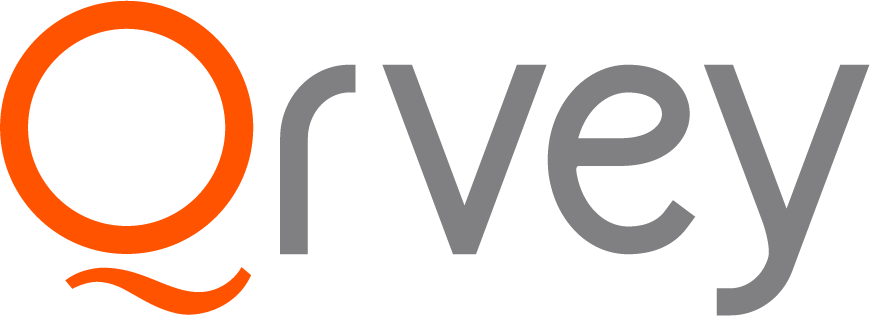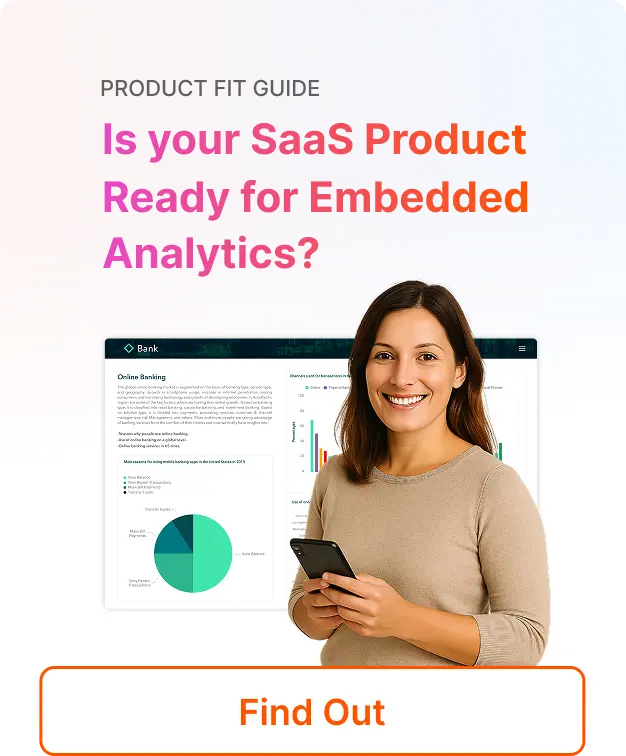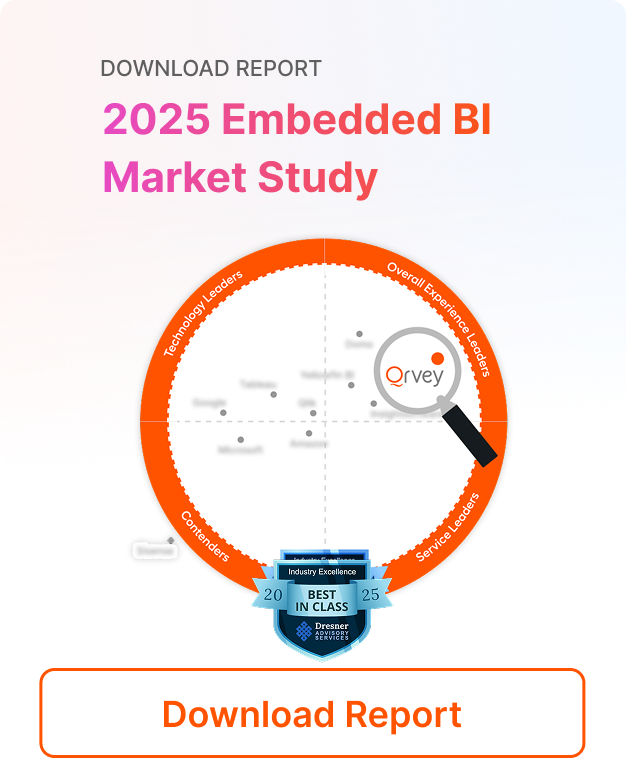
⚡Key Takeaways
- Qrvey — Best for embedded, multi-tenant SaaS: purpose-built for embedded analytics with a built-in data engine, native tenant isolation, embedded authoring, agentic-ready workflows, and flat-rate pricing.
- ThoughtSpot — Best for search-first internal BI: excels at conversational Q&A via Spotter and semantic search; strong for internal use, but embedded capabilities are limited.
- Tableau — Best for Salesforce-aligned teams: combines agentic analytics (Tableau Next) with deep visualization capabilities; embedding and multi-tenancy require careful planning.
- Logi (InsightSoftware) — Best for existing Logi customers: offers broad embedded features and non-iframe options; may feel fragmented and outdated for new ISVs starting from scratch.
- Looker — Best for governed internal BI: built on a strong semantic layer (LookML); embedded self-service and multi-tenant operations often require custom workarounds.
SaaS companies are under pressure to deliver smarter, more responsive products—and analytics is at the center of that demand.
Customers expect more than static dashboards; they want insights that lead to action. AI is raising the bar, and agentic analytics is emerging as a key differentiator.
Agentic framework go beyond visualization. They combine AI-driven analysis with embedded workflows, enabling insights to trigger decisions, alerts, and system updates—right inside your product.
But not all platforms are built for this. Success depends on multi-tenancy architecture, embedded authoring, automation, and pricing that scales with adoption.
In this guide, we compare five leading platforms—Qrvey, ThoughtSpot, Tableau, Logi (InsightSoftware), and Looker—across use cases, features, pricing, and tradeoffs, so you can choose the right foundation for agentic analytics in your SaaS product.
Quick comparison table
| Platform | Best for | Stand-out feature | Price starting point |
|---|---|---|---|
| Qrvey | Embedded, multi-tenant SaaS with in-product authoring and AI workflows | Built-in analytics engine + native tenant isolation | Flat-rate (custom) |
| ThoughtSpot | Search-first analysis; conversational internal BI; light embedding | Spotter (AI-assisted Q&A) | Enterprise (usage/user-based; custom) |
| Tableau | Salesforce-aligned teams adopting “agentic analytics” | Tableau Next (agentic skills, Concierge) | User-based (Creator $75, Explorer $42, Viewer $15) + Embedded custom |
| Logi (insightsoftware) | Existing Logi/insightsoftware customers consolidating legacy | Broad embedded features; non-iframe options | From ~$16K/yr (indicative), custom |
| Looker | Governed internal BI on a strong semantic layer | LookML modeling + Gemini assistance | Platform + per-user (enterprise/embedded SKUs; custom) |
Qrvey: Best for SaaS companies
Qrvey is purpose-built for SaaS companies that need secure, tenant-aware analytics embedded directly within their applications—eliminating the need to redirect users to external BI tools.
Designed for customer-facing use cases, Qrvey offers embedded authoring, native multi-tenancy, and a built-in data engine that supports both co-mingled and segregated data models.
Deployment and data remain fully under your control, with flexible multi-cloud options and environment-specific hosting. Flat-rate pricing removes per-user friction, making scaling simple and predictable.
With natural language analysis and no-code workflows, Qrvey empowers teams to move beyond “what happened” toward “what should happen next”—a practical path to agentic analytics for embedded, multi-tenant environments.
Key features
Embedded self-service authoring
Embed everything—dashboards, the personalized dashboard builder, filters, and custom actions—so customers create and tailor analytics inside your UI. This reduces backlog for your team and increases adoption because analytics feel native to the product.
Built-in data engine with native multi-tenancy
Qrvey includes its own high-performance analytics engine and an assert-based security model (row, column, and schema). You can support co-mingled or segregated data while enforcing tenant isolation—without standing up a separate analytics warehouse just to get performance.
AI-assisted insights and no-code actions
Ask questions in plain language to get the right visual; then convert findings into next steps with no-code workflows—alerts, ticket creation, CRM updates, or messages to your team.
Bring your preferred models, inherit your app’s security, and roll capabilities out safely across tenants as you mature toward agentic architecture.
Pricing
Flat-rate pricing covers unlimited tenants, users, dashboards, and instances. Margins grow as adoption grows—unlike per-user licensing that penalizes success.
Advisory services help package, price, and launch monetized tiers aligned to your customer segments and usage patterns.
Where Qrvey shines
- Purpose-built multi-tenancy aligns with your domain model, enabling tenant-aware security and provisioning.
- End-to-end platform: includes a built-in engine, embedded authoring, and automated promotions.
- Operate on your terms: deploy in your cloud, keep data within boundaries, and maintain full control.
Why Qrvey
- Empowers True Self-Service: Let customers explore, build, and automate insights on their own, freeing your engineers from endless report requests.
- Fully Embedded Experience: Every component, from dashboard builders to automation triggers, lives inside your product’s UI for a native, branded feel.
- Unified Data & Analytics Engine: Manage structured and semi-structured data without external warehouses or ETL sprawl.
- Multi-Tenant by Design: Secure tenant isolation enables safe customization at scale.
- Embedded AI: AI-driven assistants that allow users to query datasets, generate visualizations, and create formulas and SQL queries using natural language—making analytics more intuitive and accessible than ever.
- Agentic Analytics: Qrvey’s MCP server is tenant-scoped and JWT-authenticated, ensuring secure, governed access while enabling AI agents to discover and interact with analytics assets across environments.
Where Qrvey falls short
- Tailored for multi-tenant external use: Qrvey is optimized for customer-facing embedded analytics, not internal BI rollouts—those may be faster with general-purpose BI tools.
- Designed specifically for embedding: with deep product integration, including embedding, SSO, and API-driven automation.
Successful implementation requires engineering planning to align with your product’s architecture and user experience.
Organizations seeking a stand-alone BI platform for internal use should explore other options.
Customer reviews
Customer reviews emphasize embedded self-service, multi-tenant scale, and reduced backlog for product teams.
Accounts frequently highlight faster in-product iteration and lower total cost versus stitching together a warehouse, visualization tool, and workflow engine.
Who Qrvey is best for
Qrvey is best for ISVs/SaaS teams that need tenant-aware embedded analytics with AI-assisted insight, in-product authoring, multi-cloud deployment control, and predictable unit economics at scale.
ThoughtSpot — Best for search-centric internal BI
Internal teams that prefer a search-driven, conversational analytics experience may find ThoughtSpot appealing. Its AI analyst, Spotter, uses a semantic layer to interpret user intent and business context, making it well-suited for internal BI and light embedding.
For deeply embedded, multi-tenant self-service scenarios—especially where users must create dashboards within your app—carefully evaluate authoring capabilities and tenancy complexity.
Key features
- Spotter (AI Q&A): natural-language questions with visual answers and coaching.
- Analyst Studio: SQL/R/Python workbench plus AI-assisted SQL generation.
- Proactive insights: anomaly detection, alerts, and forecasting.
- Embedding: charts, liveboards, Spotter; embedded authoring is not available.
Pricing
Enterprise pricing blends user-based and usage-based models for Embedded, with a limited developer tier for testing.
Final pricing is custom per deployment, content volume, and concurrency expectations.
Where ThoughtSpot shines
- Fast NLQ ramp: A search-driven user experience enables non-technical users to quickly find answers with minimal training.
- Agentic momentum: ThoughtSpot’s AI analyst, Spotter, uses semantic understanding to guide users toward more informed, AI-assisted decisions.
- Workflow integration: Sync and mobile features extend analytics into everyday tools like Slack, Google Sheets, and Salesforce—embedding insights directly into daily workflows.
Where ThoughtSpot falls short
- Multitenancy complexity: ThoughtSpot’s reliance on live data sources and carefully configured row-level security (RLS) adds operational overhead and risk for ISVs managing multiple tenants.
- Embedded authoring limitations: Embedded views are read-only. Full self-service dashboard creation requires exposing the full vendor interface, which increases cost and reduces white-label flexibility.
Customer reviews
Users frequently praise ease of use, speed to first insight, and search-driven discovery. Concerns cluster around multi-tenant governance, the cost of enabling external use cases, and the need to expose the full product when customers must design dashboards themselves.
Who ThoughtSpot is best for
Data-driven teams prioritizing conversational analysis for internal stakeholders, plus light embedding where search is primary and embedded authoring parity is not a requirement.
Tableau — Best for Salesforce
Ideal for organizations already invested in Salesforce and looking to adopt agentic analytics through Tableau Next and Agentforce.
Tableau remains a leader in data visualization and authoring, now enhanced with agentic features like Concierge.
For ISV-grade, multi-tenant embedding, carefully assess deployment strategy, CI/CD compatibility, and tenancy architecture—especially if operating outside the Salesforce ecosystem.
Key features
- Tableau Next: Introduces agentic features like semantic learning and integrations with Slack and Salesforce.
- Product Portfolio: Offers Cloud, Server, and Desktop options for content creation and distribution.
- User Guidance: Includes Pulse alerts, performance insights, and rich visual authoring tools.
- Embedding: Available, but APIs and multi-tenant operations are largely assembled through custom configurations rather than natively designed for embedded ISV
Pricing
Core licensing is user-based—Creator $75, Explorer $42, Viewer $15 per user/month—plus enterprise options.
Embedded uses consumption-based pricing and is custom-quoted; budget for usage variability, concurrency bursts, and advanced administrative add-ons.
Tableau offers tiered plans designed for different user needs. For a deeper dive into hidden costs and plan comparisons, see our comprehensive Tableau Pricing guide.
Where Tableau shines
- Visualization depth: Industry-leading authoring tools and a vast ecosystem of visual components enable rich, complex storytelling.
- Agentic evolution: Integration with Agentforce brings actionable insights directly into the tools where work happens.
- Community support: A broad user base, extensive plugin library, and strong knowledge resources make Tableau highly accessible and well-supported.
Where Tableau falls short
- API and DevOps friction: Automation and content promotion workflows can be fragmented, making CI/CD integration more complex and less seamless.
- Tenancy limitations: Managing multi-tenancy often requires workarounds using sites, row-level security (RLS), and document-level tooling.
Native support for multi-tenant governance is limited, adding complexity for embedded ISV deployments.
Customer reviews
Practitioners celebrate visual expressiveness and community strength but cite friction with environment promotion, multi-tenant governance, and embedding at scale.
Architectural changes tied to Salesforce priorities lead some buyers to proceed with careful proof-of-concepts before committing.
Who Tableau is best for
Salesforce-aligned teams seeking advanced visualization and agentic capabilities within that ecosystem; internal BI with some embedding rather than deeply customized, multi-tenant ISV scenarios.
If Tableau’s strengths align with your stack, it remains a top choice, but if its architectural constraints or pricing complexity pose challenges, reviewing leading Tableau alternatives can help you identify a better fit.
Logi (insightsoftware) — Best for existing InsightSoftware customers
Symphony is best suited for organizations consolidating legacy analytics within the Logi or InsightSoftware ecosystem.
While new ISVs may find the suite complex compared to unified modern platforms, Symphony checks many embedded analytics boxes.
It offers non-iframe embedding options and low-code tooling, making it a practical choice for existing customers standardizing on the vendor’s stack.
Key features
- Built-in Engine: Supports multi-tenant environments with robust self-service authoring and well-documented APIs for integration and automation.
- Logi AI: Enables chatbot and chatflow orchestration, along with AI-assisted visualizations to enhance user interaction and insight generation.
- Flexible Deployment: Offers non-iframe embedding options, multi-cloud compatibility, and a developer playground for testing and customization—making it easier for teams to tailor solutions within the vendor’s ecosystem.
Pricing
Symphony uses a custom pricing model that varies by deployment scope and feature usage. Customers often report cost increases as implementations expand.
Trials and proof-of-concept (POC) access are available through sales engagements.
Indicative entry-level pricing for core components typically starts in the mid-teens (thousands of USD) per year.
Where Logi shines
- Embedded Coverage: Symphony supports key ISV needs with non-iframe embedding, a built-in analytics engine, workflow automation, and API access for integration.
- Migration Path: Offers an upgrade path for organizations using legacy tools like Logi, JReport, or Dundas—allowing reuse of existing assets while layering in modern capabilities.
Where Logi Falls Short
- Platform cohesion: Symphony combines multiple acquired products, which can result in a fragmented user, administrator and developer experience.
- Greenfield fit: For ISVs starting fresh, modern unified platforms may offer faster setup and simpler operations.
Customer Reviews
Peer feedback highlights Symphony’s broad functionality and strong embeddability. However, users often note lifecycle complexity and rising costs as deployments scale.
Long-time customers transitioning to Symphony report mixed experiences, especially when legacy components must be carried forward.
Who Logi Is Best For
Enterprises consolidating existing Logi or InsightSoftware investments that want comprehensive embedded features without fully replatforming their analytics stack.
Looker — Best for Centralized Governance on GCP
Looker excels at governed internal BI, built on a strong semantic layer (LookML) and optimized for high-performance warehouses like BigQuery and Snowflake.
For multi-tenant embedded self-service, Looker often requires workarounds across deployment, embedding, and tenancy.
It’s best suited for organizations where centralized modeling and governed metrics are more critical than embedded authoring.
Key Features
- LookML: Enables robust data modeling, metric definitions, and governance.
- Gemini in Looker: Adds conversational analytics, visualization formatting, and LookML authoring assistance.
- Embedding: Supports dashboards and Explores, but does not allow embedded dashboard creation for ISV customers.
- No Built-in Data Engine: Performance depends entirely on the connected data warehouse.
Pricing
Looker uses a two-part pricing model: platform licensing (per instance) plus user-based pricing. Enterprise SKUs (standard, embed) scale with user count and API usage.
Pricing is considered premium compared to smaller vendors and is typically negotiated through cloud channels.
Where Looker Shines
- Governance Depth: Its mature semantic layer supports organizations pursuing a single source of truth.
- AI Assistance: Gemini features accelerate dashboard creation and reduce repetitive modeling tasks.
Where Looker Falls Short
- Embedded Authoring: Not supported; embedded dashboards are iframe-based and lack customization.
- Tenancy and Operations: Multi-tenant isolation and content promotion require code-heavy solutions. Hosting in your own cloud is possible but operationally demanding.
For teams seeking more agility, exploring Looker Studio alternatives may provide a better fit.
Customer Reviews
Analysts and buyers praise Looker’s governance and modeling capabilities but note its premium pricing, reliance on optimal warehouse performance, and friction for embedded ISV scenarios—especially when customers need to create dashboards within your product rather than in Looker’s interface.
Who Looker Is Best For
Centralized data teams on GCP who prioritize LookML governance for internal BI and can tolerate iframe-based embedding with limited need for embedded authoring.
How to Choose an Agentic Analytics Platform: Our Top Tips
Focus on the capabilities that drive long-term success: multi-tenancy, embedded authoring parity, a built-in data engine with transformation support, deployment control, and agentic-ready workflows.
Just as important—ensure the pricing model scales with adoption and doesn’t penalize growth.
Feature Considerations
Multi-Tenant Model and Isolation
Evaluate how the platform enforces tenant isolation across rows, columns, and schemas. Look for support for both co-mingled and segregated data models without duplicating logic.
JWT-based claims and provisioning APIs are essential for automation. Native multi-tenancy reduces security risks and accelerates onboarding.
Qrvey is natively multi-tenant, uses assert-based isolation and inherits your app’s security model, eliminating rework and ensuring compliance at scale.
Embedded Authoring
Platforms that limit embedding to viewers limit adoption and create bottlenecks—your team becomes responsible for every new dashboard. Prioritize solutions that allow you to embed the dashboard builder itself, with governance controls, branding, and custom actions.
Qrvey natively embeds the builder, filters, and actions, enabling customers to create and customize analytics directly within your product.
Data Engine vs. Semantic Layer-Only Architecture
A semantic layer is valuable, but without a built-in data engine, performance depends entirely on your warehouse—leading to latency, cost spikes, and fragile pipelines.
A built-in engine offloads workloads, improves responsiveness, and simplifies architecture.
Qrvey includes a high-performance data engine with transformation capabilities, reducing reliance on external databases and accelerating time-to-value for AI in SaaS deployments.
Agentic-Ready Workflows
Agentic analytics goes beyond generating insights—it’s about enabling action. Look for platforms that combine AI-driven analysis with no-code workflow automation to trigger alerts, update systems, or launch processes.
For a deeper look into how these capabilities are applied in real-world scenarios, explore agentic AI use cases that demonstrate how businesses turn insights into automated action.
Qrvey pairs natural language querying with workflow automation, allowing SaaS teams to deliver insights that flow directly into customer workflows.
Deliver Agentic Analytics to Your Customers with Qrvey
Agentic analytics enables faster decisions and fewer manual steps—but only if your platform supports multi-tenancy, embedded authoring, and AI-powered workflows.
Qrvey helps SaaS companies accelerate this transformation with a fully embedded stack: a built-in analytics engine, native tenant isolation, and no-code automation that turns insights into action.
You can deploy in your own cloud, integrate your existing security model, and roll out agentic capabilities without re-architecting your product. With flat-rate pricing and expert go-to-market support, Qrvey makes agentic analytics scalable, efficient, and customer-ready.

Natan brings over 20 years of experience helping product teams deliver high-performing embedded analytics experiences to their customers. Prior to Qrvey, he led the Client Technical Services and Support organizations at Logi Analytics, where he guided companies through complex analytics integrations. Today, Natan partners closely with Qrvey customers to evolve their analytics roadmaps, identifying enhancements that unlock new value and drive revenue growth.
Popular Posts
Why is Multi-Tenant Analytics So Hard?
BLOG
Creating performant, secure, and scalable multi-tenant analytics requires overcoming steep engineering challenges that stretch the limits of...
How We Define Embedded Analytics
BLOG
Embedded analytics comes in many forms, but at Qrvey we focus exclusively on embedded analytics for SaaS applications. Discover the differences here...
White Labeling Your Analytics for Success
BLOG
When using third party analytics software you want it to blend in seamlessly to your application. Learn more on how and why this is important for user experience.








